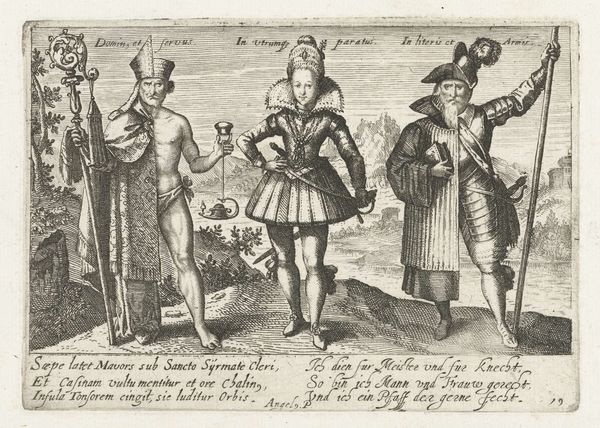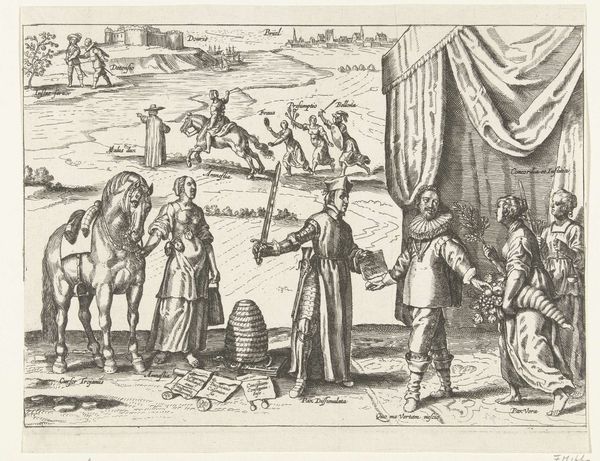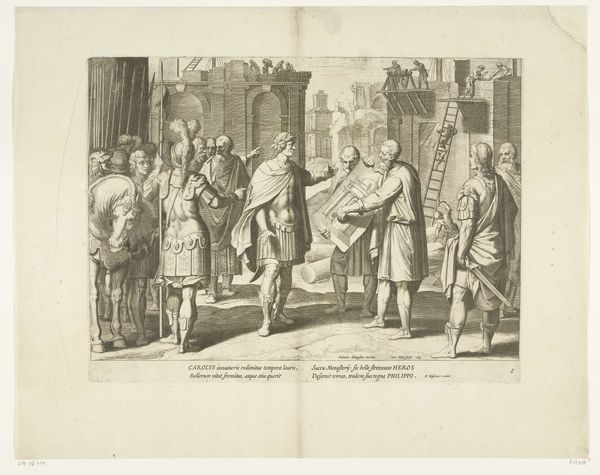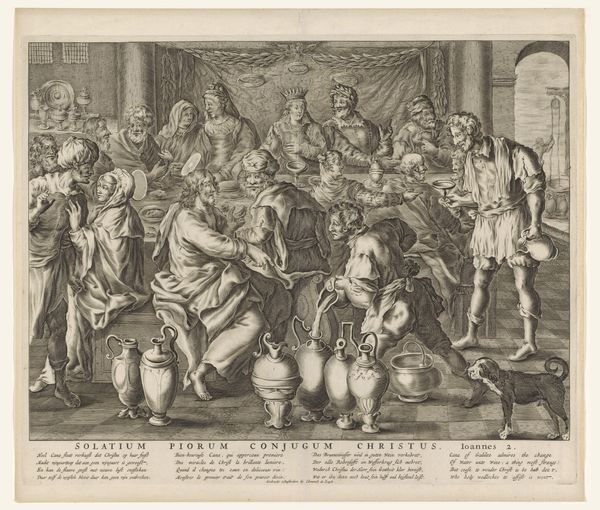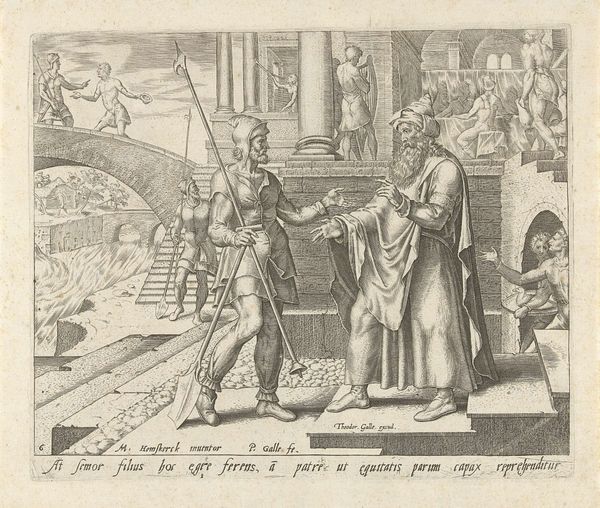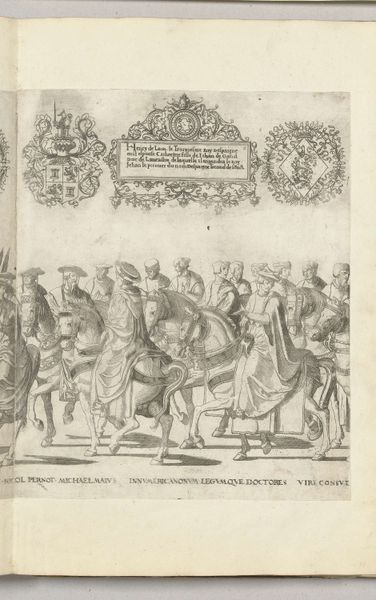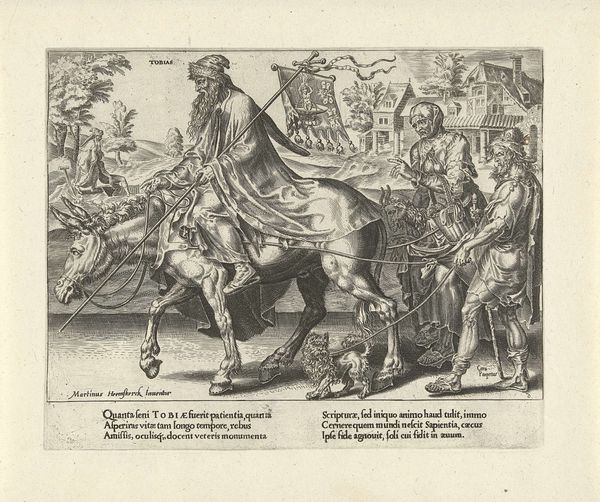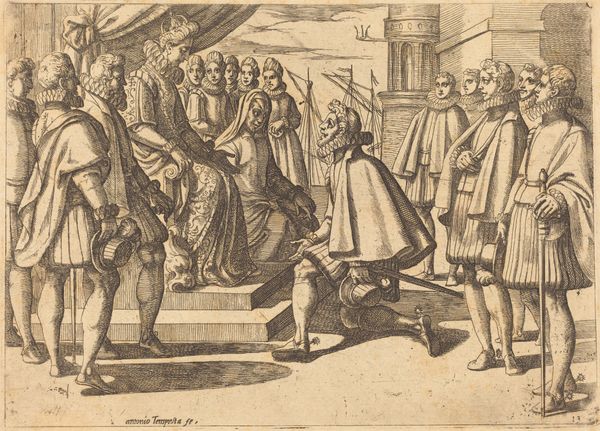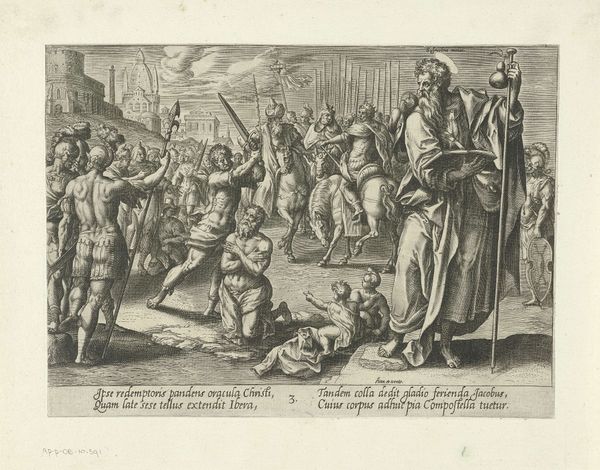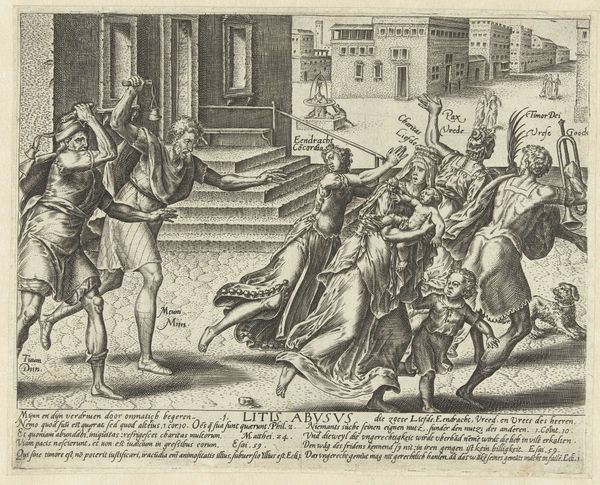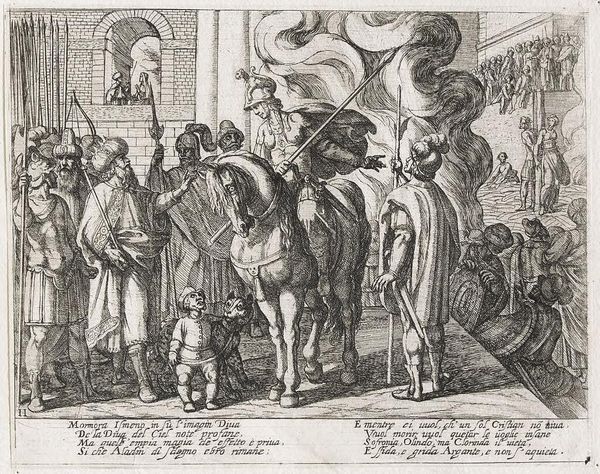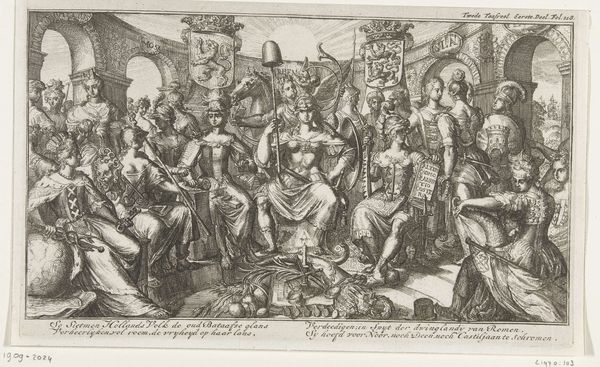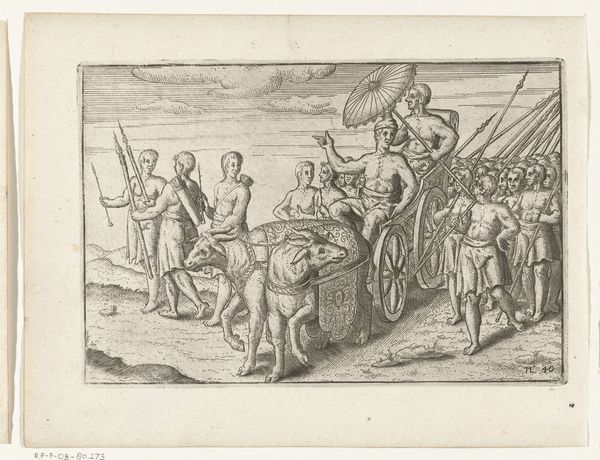
Haarlemse burgerij smeekt de prins van Oranje om hulp, ca. 1577-1579 1578 - 1580
0:00
0:00
Dimensions: height 115 mm, width 178 mm
Copyright: Rijks Museum: Open Domain
Editor: This engraving from around 1577 to 1579, "Haarlemse burgerij smeekt de prins van Oranje om hulp," or "Citizens of Haarlem Begging the Prince of Orange for Help," is by Hendrick Goltzius, currently hanging in the Rijksmuseum. What strikes me immediately is how theatrical it is, almost staged. What do you make of it? Curator: You’ve hit on something important there – it *is* staged. Let’s think about what an image like this would *do*, rather than just *be*. This print depicts a specific moment in the Dutch Revolt against Spanish rule: the siege of Haarlem. The kneeling figure represents the citizenry, pleading for William of Orange’s aid. Editor: I see... So, it’s a piece of political propaganda? Curator: Precisely. Consider how Goltzius positions William of Orange, almost larger than life, leading the charge towards assistance. Notice the allegorical figures around the central group representing concepts such as Faith, Hope, and Justice, meant to legitimize the Dutch cause and rally support. It attempts to sway public opinion by framing the conflict as a moral imperative. What do you observe about the text interwoven throughout the print? Editor: There are quite a few inscriptions... Does this give more context? Curator: Absolutely. Prints like these functioned as portable and reproducible forms of information dissemination, and thus crucial for communicating across various social strata during the period. The text above and below gives voice to the anxieties and hopes surrounding the conflict. Editor: That’s fascinating, how the image and text work together. It makes me think differently about the role of art during periods of political upheaval. Curator: Exactly! It's a powerful reminder that art can be a potent tool for shaping historical narratives. It changes my perspective too, knowing it makes use of moralizing drama.
Comments
No comments
Be the first to comment and join the conversation on the ultimate creative platform.
